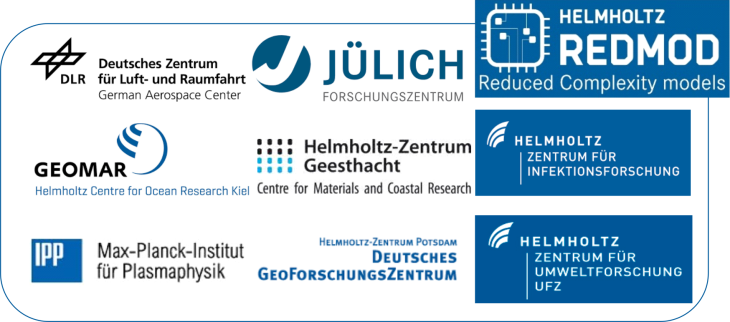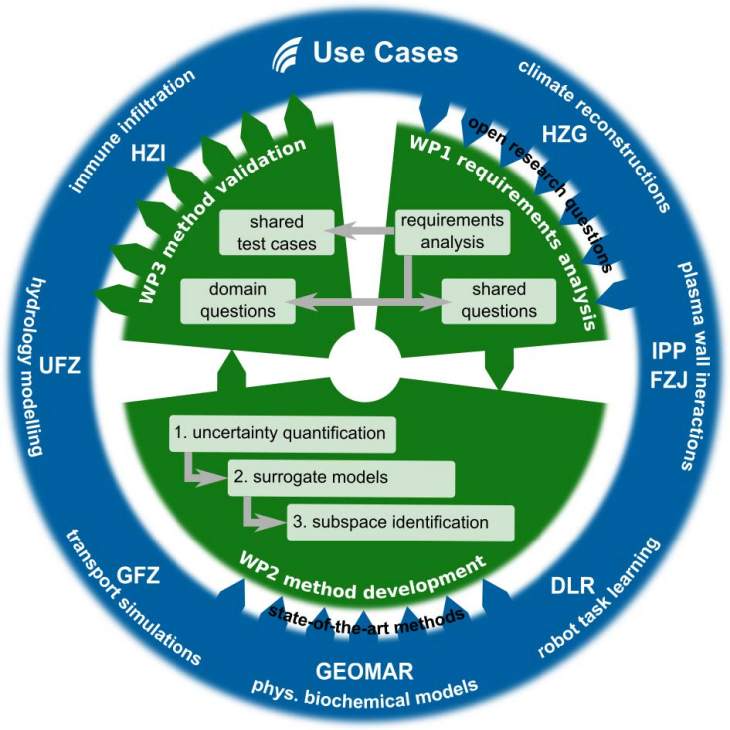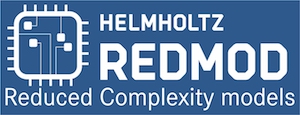About the Project
The majority of users of complex computer models face the same challenge: the transformation/condensation of the huge amount of simulation data into knowledge. At the very core of this transformation process three components have been identified: Uncertainty Quantification, development of fast surrogate models and the identification of key parameters and dependencies. These three components, existent independently of the research area, need to be mastered for an efficient knowledge extraction. The proposed, interdisciplinary work program is aimed towards a joined effort of the centers for an integrated approach addressing and developing the three components simultaneously and in a unified manner, in contrast to the present situation.
Defining relevant and strategic important test cases
In the initial phase of this interdisciplinary initiative, the existing but distributed experience of the HGF centers will be brought together to define test cases along selected use cases, which will cover the respective needs of the centers and which are suited to demonstrate the viability of the novel approaches developed, i.e. act as test beds for the adaptation and validation. The use cases were selected by the research partners because of their relevance and strategic importance for the respective research field. They all bear the potential for significant progress beyond current state-of-the-art through a new holistic approach using advanced data science methods.

The eight Helmholtz centers involved in the project
Focus on development of transferable techniques
Although the focus of the present project is the joint consideration of the three components to eventually derive reduced complexity models, also progress in any of the components is of immediate use for all partners: uncertainty quantification of the derived results is a core issue of complex simulations. At the same time a proper uncertainty quantification is essential for the development of adequate surrogate models, which are suited as inexpensive emulators for the expensive computer simulation, thus enabling rapid parametric studies, which e.g. are a key for fast impact studies – however, often also indispensable for the identification of key factors or dominant subspaces. The joint project will allow to focus on the development of transferable techniques and thus transcend center-specific solutions. This will be highly beneficial also for other Helmholtz centers facing similar modelling challenges. To specifically support this transfer, open workshops are planned to provide best practice examples.
The project is coordinated by the Helmholtz Centre Geesthacht, Centre for Materials and Coastal Research.
Work Packages
The aim of WP1: requirements and testcase definition is to exchange knowledge about state-of-the-art methods among the different fields, analyze our requirements for the development of novel methods to address key research questions from use cases, and define common test cases on which these methods will be tested.
Work package leaders:
Dr. Ulrike Löptien GEOMAR Helmholtz-Zentrum für Ozeanforschung Kiel
Dr. Juan Carlos López Alfonso HZI: Helmholtz Centre for Infection Research
In WP2: development of methods novel generic methods for uncertainty quantification, surrogate model development and subspace identification are developed. Building on advances in the individual fields, we will make use of the comprehensive expertise in the research group to break new grounds and substantially advance the methodological repertoire in the different research fields.
Work package leaders:
Dr. Udo von Toussaint IPP - Institut für Plasmaphysik
Prof. Dr. Detlev Reiter FZJ - Forschungszentrum Jülich GmbH
In WP3: method validation, the methods developed in WP2 are then commonly applied to the different use cases. This application serves two purposes, firstly the methods will be validated and strengths and weaknesses will be identified by all groups. Secondly, novel approaches will emerge from the use cases to tackle open research questions and thereby setting the basis for breakthroughs in the different research fields.
Work package leaders
Dr. Marco De Lucia GFZ - German Research Centre for Geosciences
Dr. Eduardo Zorita Helmholtz-Zentrum Geesthacht

Reduced Complexity Models: Research structure - As illustrated in this figure, the project activities are partitioned into three work packages ((method validation, method development und requirements analysis) which frame the key research questions and the definition of specific requirements. Furthermore, all involved Helmholtz research centers and their research topics are shown.
